|
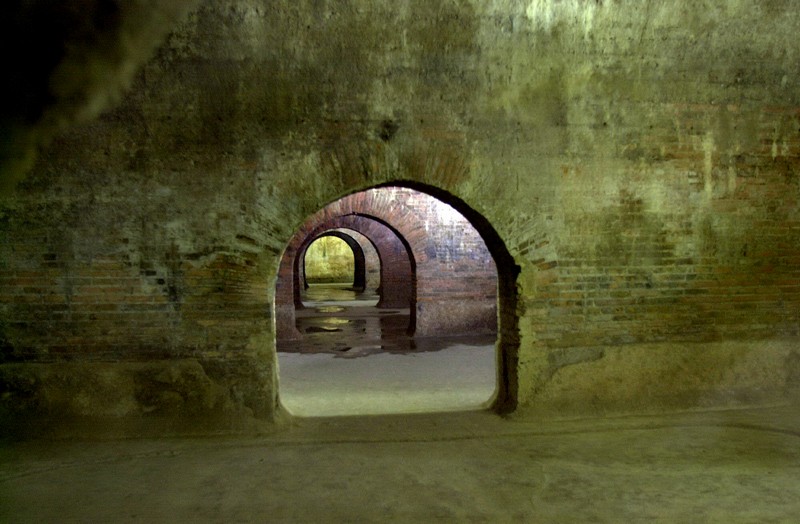
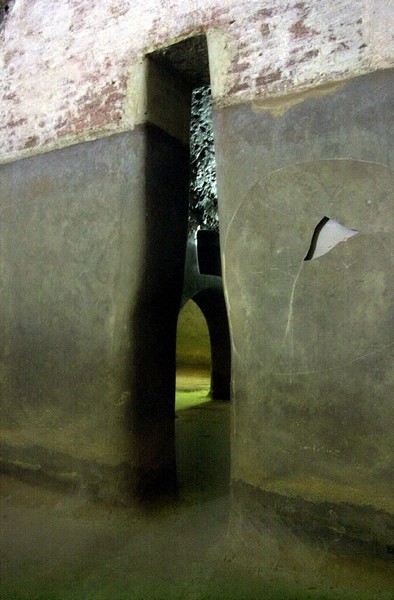
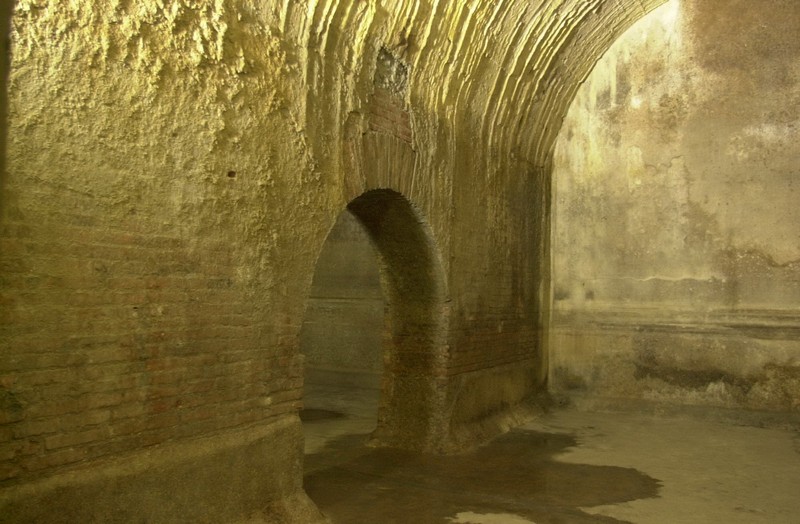
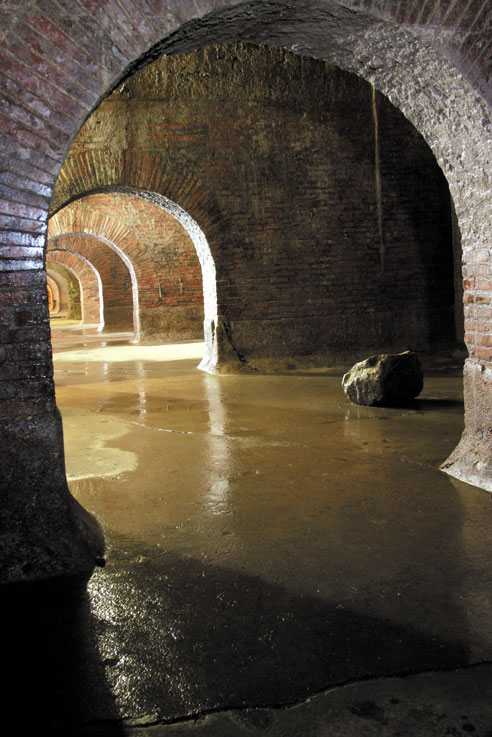
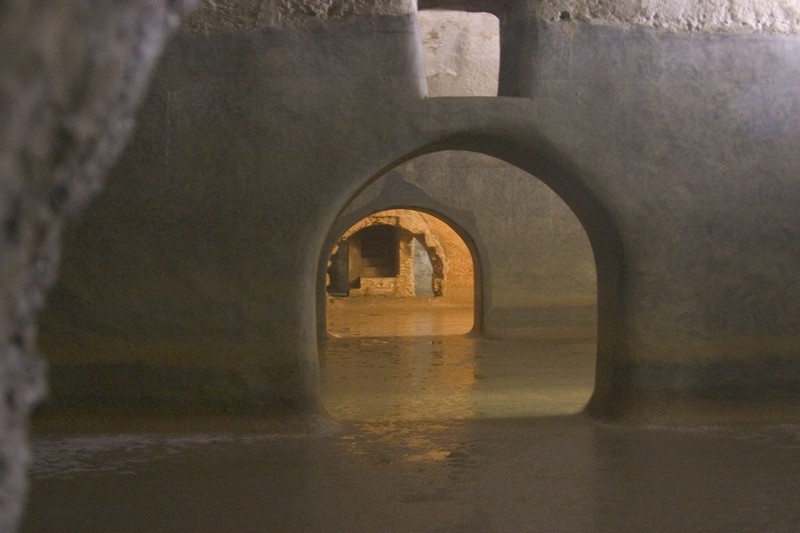
|
The City of Fermo
Roman Cisterns
The journey into the past that one embarks upon when visiting the Roman cisterns of Fermo is both interesting and surprising.
In an historic period during which everything was organised, technological and advanced, one discovers that the Romans had already thought of everything, and who knows, perhaps they were even a step ahead of us.
An example is this grandiose structure, over two thousand squared metres of surface area, designed for the storage and distribution of water to everyone in the city of Fermo between the first century B.C. and the first century A.D.
Today, access to the cisterns is gained through a small door that looks out onto a steep and narrow alley in the historic centre of Fermo, inside the ancient fortification of Girfalco. But, at one time, this was a large construction enclosed within the slope of the Firmum hill, not excavated, but built using masonry work and Roman concrete.
It is comprised of thirty adjoining chambers, set out in three rows with ten chambers in each. Each one of them is at a level that is slightly lower in respect to the next, in such a way that the water could slowly flow away from one chamber to another in order to reach the only exit point, which would introduce the water resource to the aqueduct and resupply the city. If up to now, this already seems like an astonishing piece of work, think about what it would have been to the Romans. The cisterns were waterproofed with opus signinum, which is a mixture of broken up terracotta and a very resistant mortar. The water level was kept quite low, at about 70cm, so that it did not compromise the stability of the structure. The flow of the water was calculated in such a way that it moved quickly enough to prevent the water from putrefying, but slowly enough to allow the sedimentation of any impurities at the bottom of the basin. It was also perfectly ventilated, thanks to the 13 ventilation shafts that were periodically opened to introduce fresh air into the cistern. The result of all this was that there was crystalline and drinkable water, which would be introduced into the city’s aqueduct.
It is, in short, a marvellous example of the finest hydraulic engineering.
As often happens, this ancient piece of work also had a second life. After falling into disuse between the ninth and tenth century A.D., it was used as a dumping ground and was covered with rubble that reached well beyond half the height of chambers. This was the condition Dominican monks who inhabited the convent above found it in during the thirteenth century. They used it as a cellar, equipping it with a stairway and chutes in order to be able to roll the bottles and new openings between each chamber and a ‘palmento’, which was a medieval structure for the pressing grapes and making wine. Today, this important structure is enjoying its third life, which is one of value: it is second largest of its kind in Italy and a beauty unique to Marche.
Special thanks to
Municipality of Fermo

Sources:
Municipality of Fermo, Department of Tourism
http://www.fermo.net/
Copyright Liberation Ventures Ltd.
|